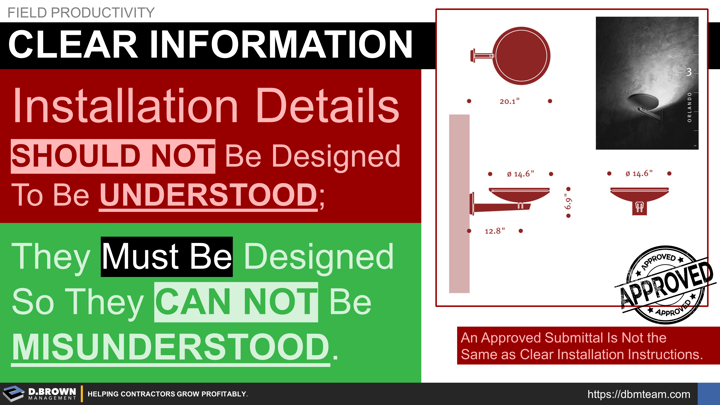This is "Simple but Not Easy"
- WHAT (Vision): What is our Winning Aspiration? What does the "Top of the Mountain" look like?
- WHY (Mission): Why are we Climbing the Mountain?
- HOW (Values): How do we Behave and Decide along the way? What are the Non-Negotiable Boundaries?
Slightly Longer Descriptions:
- Vision: The vision statement is an organization's aspirational description of what it hopes to achieve or accomplish in the long-term. It is a forward-looking statement that sets a defined direction for the organization's future and serves as a guidepost to determine the path ahead. The vision is typically ambitious and may not be realistically achievable, but it gives the organization a clear goal to strive for.
- Mission: The mission statement is a concise explanation of the organization's reason for existence. It outlines what the organization does, for whom it does it, and often how it does it. The mission is more grounded in the present than the vision, describing the organization's core purpose and focus. While the vision is about the future aspirations, the mission is about the present operations.
- Values: The values of an organization are the core principles that guide and govern its conduct. They set the ethical tone of the organization, defining what it stands for and how it will carry out its mission and work toward its vision. Values are the beliefs and principles that inform the day-to-day behaviors, decisions, and actions of the organization and its members.
Now, the interrelationship between these three aspects:
These three components—vision, mission, and values—work together to provide a comprehensive direction for an organization. They align the organization's actions with its purpose and aspirations.
The vision is the ultimate goal, the "what" the organization is striving for. The mission provides the roadmap, the "how" the organization will achieve this goal. The values provide the framework or the "why" and "in what manner" the organization will move towards its goal.
In summary, the vision, mission, and values of an organization are interrelated strategic elements that provide a sense of direction, purpose, and ethical conduct. By clearly defining and aligning these components, organizations can guide their decision-making, shape their culture, and establish a strong identity.
Now the hard part:
The questions will likely get answered in a different order than how they are communicated. For example, you likely developed your values for behavior and decision making largely in childhood. Those may have been from really great examples modeled for you, or from really bad examples.
The questions will get answered in different areas and at different levels of detail. For example, you could answer these:
- For your life
- For your career
- For a construction business
- For a market sector that contractor serves
- For a customer that contractor serves within that market
- For a project being built for that customer
- For a functional team within that business (accounting, estimating, purchasing, project management, etc.)
Working toward greater degrees of integration between these will lead to increased productivity and joyfulness.
These are not about putting words on a wall that sound great. Like installation details for a project, these must be so clear that they can not be misunderstood. Clarity is far more important than brevity or elegance.
These must evolve over time with growth in your life, career, and business.
We all learn by doing - start walking the best path you can and learn along with way. Don't get caught in analysis paralysis.
Define both what you aspire toward ("Perfect") and what your non-negotiable boundaries are. Let the gray areas in-between sort themselves out.
If you are leading the business, don't let the answers to these emerge from group think. You must facilitate meetings both as groups and 1:1 to engage your team but you must decide the answers that will most likely position you to win. Decisions around each of these questions and the execution must be intentional.
Some Examples from Stage 6+ Contractors
You can learn a lot by studying examples of how some of the larger contractors have codified their answers to these questions but know that your codification must be appropriate for your stage of growth. Some helpful examples we've found are:
- McCarthy Mission & Values
- The DPR Code
- Granite Construction Code of Conduct (Core Values & Compliance)
- Kiewit Core Values
- Stellar Construction Non-Negotiable Standards
Please keep in mind that these can't be copied and pasted. Each one is unique to that organization and to a point in time.
For instance, reach out to Sue Weiler-Doke on our team to learn about why Kiewit worked so hard to codify their core values and how they communicated this out to their thousands of team members worldwide.
It is interesting to understand what triggered such an effort nearly 140 years after their founding in 1884.
Once the answers to these questions are "Good Enough," the next level of work starts including:
- What are our strategies for achieving our vision including concrete milestone targets so we can understand if we are making progress?
- What are the management systems we must have in place for those strategies to work? Workflows, procedures, and tools.
- What are our plans so we can successfully manage through the shorter term?
- What talent must we have in place to achieve 1-3, and what is the best way to organize them?
There is value in having an experienced and unbiased 3rd party help refine your answers to each of these. The 3rd party can't make the decisions or do the work for you but they can help you think about your answers in the context of the next stage of growth you are embarking on.
We keep pressure on your vision with aggressive strategies, tactics, and operating rhythms.



